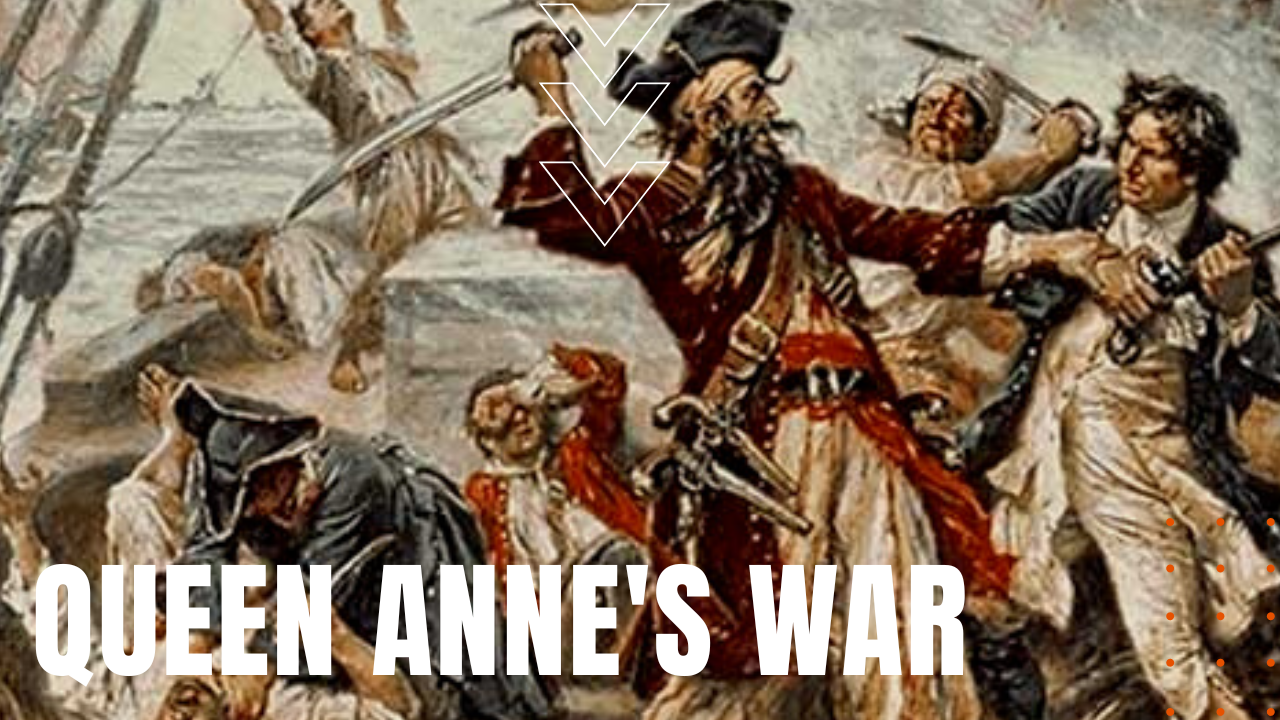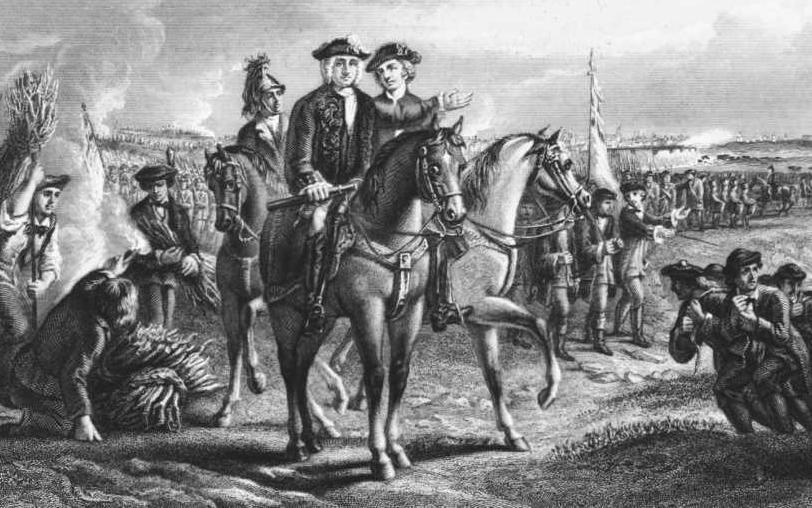
Echoes of Empire: Queen Anne’s War and the Crucible of North America
In the grand tapestry of European dynastic struggles, the War of the Spanish Succession (1701-1714) often takes center stage. But across the Atlantic, its North American counterpart, Queen Anne’s War, was a brutal, defining conflict that profoundly shaped the future of a continent. Far from the gilded palaces and battlefields of Flanders, this was a war fought in dense forests, along treacherous coastlines, and in the nascent settlements that represented the precarious outposts of empire. It was a struggle for land, resources, and the very soul of a continent, often remembered through the lens of forgotten raids, desperate sieges, and the enduring scars left on its diverse inhabitants.
For twelve years, from 1702 to 1713, the British colonies – primarily New England and Carolina – found themselves locked in a life-or-death struggle against the French settlements of New France and Acadia, and their respective Native American allies, as well as Spanish Florida. This was not a war of pitched battles between professional armies in the European style. Instead, it was a brutal, irregular conflict characterized by devastating frontier raids, naval skirmishes, and the relentless pressure of competing colonial ambitions.
The conflict’s origins were deeply rooted in the European power struggle. When the childless King Charles II of Spain died in 1700, bequeathing his vast empire to Philip, Duke of Anjou (grandson of France’s King Louis XIV), it threatened to upset the delicate balance of power in Europe. England, the Dutch Republic, and the Holy Roman Empire quickly formed the Grand Alliance to prevent a unified Franco-Spanish superpower. In North America, this grand geopolitical chess match translated into a localized, existential struggle for control over vital territories, trade routes, and the allegiance of indigenous nations.

The Northern Front: A Frontier Ablaze
Nowhere was the war’s ferocity more apparent than along the contested border between New England and New France, particularly in the region of Acadia (present-day Nova Scotia and parts of Maine). Here, the dense forests became a battleground for survival, and the war took on a particularly savage character.
The French, relying heavily on their Abenaki and other Wabanaki Confederacy allies, launched a series of devastating raids deep into New England territory. These attacks were designed to terrorize, disrupt, and drive back the encroaching English settlements, which were steadily expanding into traditional Native lands. The Wabanaki, for their part, were fighting not just for their French allies but for the preservation of their homelands and way of life against the relentless westward push of the British.
The most infamous of these raids occurred on February 29, 1704, when a force of about 250 French and 200 Abenaki warriors, led by Jean-Baptiste Hertel de Rouville, descended upon the sleeping Massachusetts village of Deerfield. The attack was swift and brutal. Before dawn, the raiders scaled the snowdrifts that had piled against the palisade walls, surprising the inhabitants. Within hours, 47 villagers were killed, and over 100, including the minister John Williams and his family, were taken captive.
The march back to Canada was a harrowing ordeal, particularly in the harsh winter conditions. Many captives, especially the young, old, and infirm, perished along the way. Those who survived faced an uncertain future, some eventually ransomed, others adopted into Native American families or assimilated into French-Canadian society. The Deerfield raid became a powerful symbol of colonial vulnerability and the brutal realities of frontier warfare, etching itself into the collective memory of New Englanders. As John Williams himself later wrote in his captivity narrative, "The Redeemed Captive Returning to Zion," the event was a "dreadful morning."
Similar raids plagued other New England towns, including Wells, York, and Haverhill, where another major attack in 1708 resulted in widespread death and capture. These incidents underscored the strategic importance of Native American alliances. For the French, their indigenous partners provided invaluable knowledge of the terrain, scouting abilities, and a formidable fighting force accustomed to guerilla tactics. For the English, securing the neutrality or allegiance of the powerful Iroquois Confederacy was a constant diplomatic challenge, often met with limited success.
On the high seas and along the coast, the war was fought for control of vital fishing grounds and trade routes. Newfoundland, with its rich cod fisheries, became a fiercely contested territory. The French launched successful raids against English settlements, including the destruction of St. John’s in 1709, temporarily disrupting the lucrative fishing industry. The English, in turn, targeted French fishing outposts.
The Southern Front: Clash in the Carolinas

While the northern frontier burned, a different but equally brutal conflict unfolded in the American South. Here, the nascent English colony of Carolina squared off against Spanish Florida, with their respective Native American allies playing a decisive role.
The primary objective for Carolina was to eliminate the Spanish threat and expand its influence. Governor James Moore of Carolina led a significant expedition against the Spanish capital of St. Augustine in 1702. While he successfully burned the town, the Spanish fortress, Castillo de San Marcos, proved impregnable, and Moore was forced to retreat.
However, the war in the South quickly devolved into a series of devastating slave raids conducted by the Carolinians and their Yamasee, Creek, and other Native American allies. These raids targeted the Spanish mission system in Florida, which housed thousands of Christianized Apalachee, Timucua, and other indigenous peoples. The Carolinians, driven by economic motives (the desire for Native slaves) and strategic goals (to depopulate and destabilize Spanish Florida), launched brutal campaigns that effectively decimated the Spanish mission system.
In 1704, Moore led a force that destroyed numerous Apalachee missions, killing hundreds and capturing thousands, who were then sold into slavery in Carolina and the Caribbean. This campaign, along with subsequent raids, virtually annihilated the indigenous populations of northern Florida and created a vast, depopulated buffer zone that would prove crucial for future British expansion. As historian Alan Gallay notes, the raids were "among the most brutal and effective in the history of North America," essentially wiping out the Native American communities that had existed in Florida for centuries. The Spanish presence in Florida was severely weakened, reduced to the fortified towns of St. Augustine and Pensacola.
The Tide Turns: British Ascendancy
Despite the early successes of French and Native American raids and the failure of some English offensives, the tide of the war gradually began to turn in favor of the British. The sheer demographic and economic superiority of the British colonies, coupled with increased support from the Royal Navy, began to tell.
The key turning point in the North came with the capture of Port Royal, the capital of Acadia. The British had made several unsuccessful attempts to take the strategically vital port, which served as a base for French privateers preying on New England shipping. Finally, in October 1710, a combined British and colonial force under the command of Francis Nicholson successfully besieged and captured Port Royal. It was a decisive victory. The town was renamed Annapolis Royal in honor of Queen Anne, and Acadia effectively became a British possession.
A more ambitious British plan to capture Quebec in 1711, involving a massive naval expedition and a coordinated overland assault, ended in disaster. A navigational error led to the wreck of several transport ships in the St. Lawrence River, resulting in the loss of nearly 900 lives and forcing the entire expedition to turn back. This failure allowed New France to survive the war with its core territory intact.
The Treaty of Utrecht and Its Legacy
The long and bloody conflict in North America finally concluded with the signing of the Treaty of Utrecht in 1713, which brought an end to the War of the Spanish Succession in Europe. The terms of the treaty had profound and lasting consequences for North America:
- Acadia: France formally ceded Acadia to Great Britain. However, the precise boundaries of "Acadia" were left ambiguously defined, a crucial oversight that would fuel future Anglo-French conflicts. The French retained fishing rights off Newfoundland and control over Île Royale (Cape Breton Island), where they would soon build the formidable fortress of Louisbourg.
- Newfoundland: France also ceded its claims to Newfoundland, though it retained fishing rights along specific stretches of the coast (known as the "French Shore"), another point of future contention.
- Hudson Bay: The vast territories around Hudson Bay, rich in fur trade, were also ceded to Great Britain. This significantly expanded British control over the lucrative fur trade and encircled New France to the north.
- Iroquois: The treaty acknowledged the Iroquois Confederacy as subjects of the British Crown, a claim that was strongly disputed by the Iroquois themselves and by the French, who had long cultivated alliances with them. This ambiguity further complicated Anglo-Native relations.
Queen Anne’s War, though often overshadowed by its European counterpart, was a crucible that forged the geopolitical landscape of North America. It solidified British dominance along the Atlantic seaboard, significantly weakened French influence, and set the stage for the final, decisive struggle for continental supremacy – the French and Indian War (Seven Years’ War) just decades later.
For the colonists, the war was a brutal lesson in self-reliance and the harsh realities of imperial conflict. It fostered a growing sense of shared identity and grievance, laying some of the groundwork for future resistance against distant imperial authority. For the Native American nations, it was a catastrophe. Caught between competing empires, their populations decimated by disease and warfare, and their lands increasingly coveted by both sides, the war dramatically accelerated their dispossession and marginalization.
While the names of Deerfield, Port Royal, and St. Augustine may not resonate with the same historical weight as Blenheim or Malplaquet, the events of Queen Anne’s War left an indelible mark on North America. It was a war of frontiers and forgotten heroes, of terror and tenacity, a stark reminder that even the grandest European conflicts cast long, bloody shadows across distant shores, forever altering the course of nations and the lives of countless individuals. The echoes of empire, and the struggles of those caught within its grasp, still resonate in the landscape and history of the continent today.


